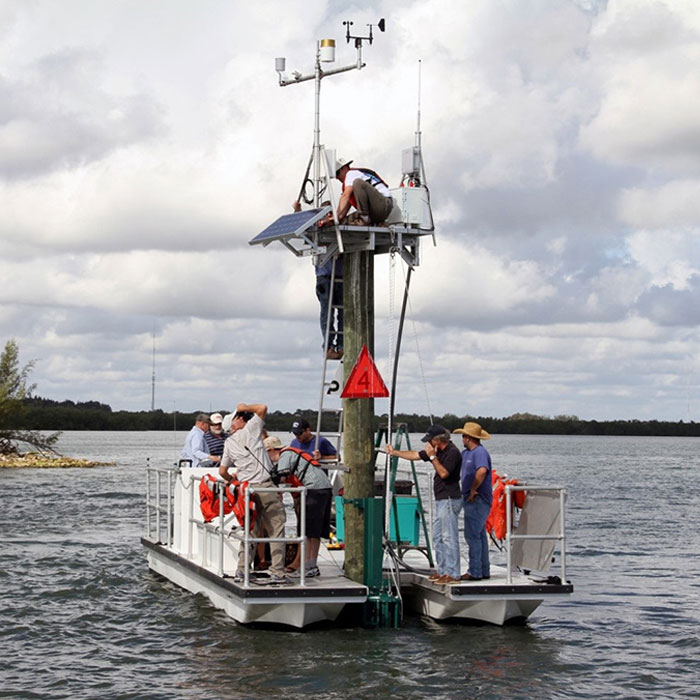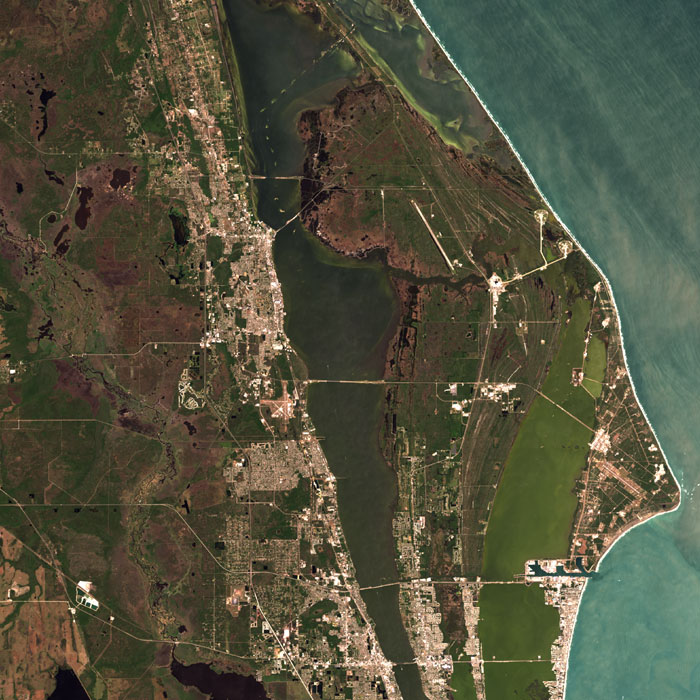HAB Drivers and Dynamics
The goal of this objective is to understand the physical and environmental factors that drive the growth, decline and toxicity of harmful algal blooms along coastal environments and learn how to better detect them.

Population growth and increasing anthropogenic inputs of nutrients have caused major ecological shifts within the IRL. Researchers seek to determine the concentration of key nutrients and how they vary by location and time of year. Using both lab and field measurements, researchers can not only get “snap-shot” views of water quality in the lagoon, but also real-time data from 10 different monitoring stations in the IRL. Scientists can use this information to better understand how nutrients like nitrogen and phosphorus impact the phytoplankton community and determine potential reservoirs capable of initiating future blooms.

Scientists and engineers also use satellite imaging techniques to detect areas where high abundances of algae may be present. This allows for our researchers to get large scale information on the distribution of a variety of algal species in the Indian River Lagoon as well as changes due to weather, tidal exchange or anthropogenic freshwater releases. This data can then be combined into an integrative computer model to help researchers predict when and where HAB events may occur.
